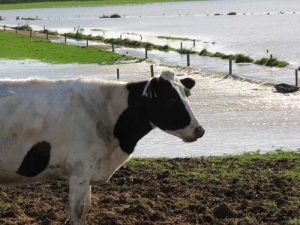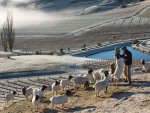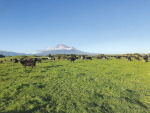Taranaki farmers are bouncing back from the devastating floods two months ago.
In a season when most dairy farmers will end up in the red, thanks to the low milk prices, these farmers deserve a pat on the back for forking out money on repairs.
Each farmer in eastern and southern Taranaki has spent thousands of dollars on digger hire, fencing contractors and riparian plants to get farms back on track.
It would have been easy for farmers to hide behind the excuse of low payout and leave the rivers and streams without riparian plantings and further susceptible to erosion.
The figures are mind boggling: Taranaki has 14,000km of rivers and waterways, 85% of which have riparian management plans, and 65% have been planted.
The floods in June were devastating; the council described it as an extreme event and that farmers might expect to be hit by such extraordinary damage only once or twice in a lifetime of farming.
In many cases, years of investment and hard work that farmers have put into their properties through the council’s riparian and sustainable land management programmes were devastated by flooding and erosion over a couple of days.
There was extensive slipping, soil erosion and damage to fencing in the eastern hill country and on the ring plain where some farms lost hundreds of metres of riparian planting. Recent plantings were destroyed; they are more vulnerable as the young plants are still developing roots. Once mature, the riparian margins will stand up better to future flooding.
Farmers are not alone in their quest to repair fence and plant waterways; the council has set aside $395,000 to help farmers. The Government has chipped in with $2.6 million for affected communities in Taranaki, Whanganui and Manawatu.
Sustainability remains a buzzword for the dairy industry. Taranaki farmer Brendan Attrill says restoring riparian plants and fences on his flood-ravaged farm was a priority.
Most farmers are in the business for the long haul; they have a duty to protect the environment whatever the payout.
The council acknowledges that farmers’ and landowners’ environmental work is vital to caring for Taranaki, ensuring farm work and living off the land is sustainable.
Taranaki is a great example of a council and farmers working hand-in-hand. They run a voluntary scheme but the healthy uptake by farmers indicates that farmers take their environmental responsibilities seriously, no matter where the payout stands.


















